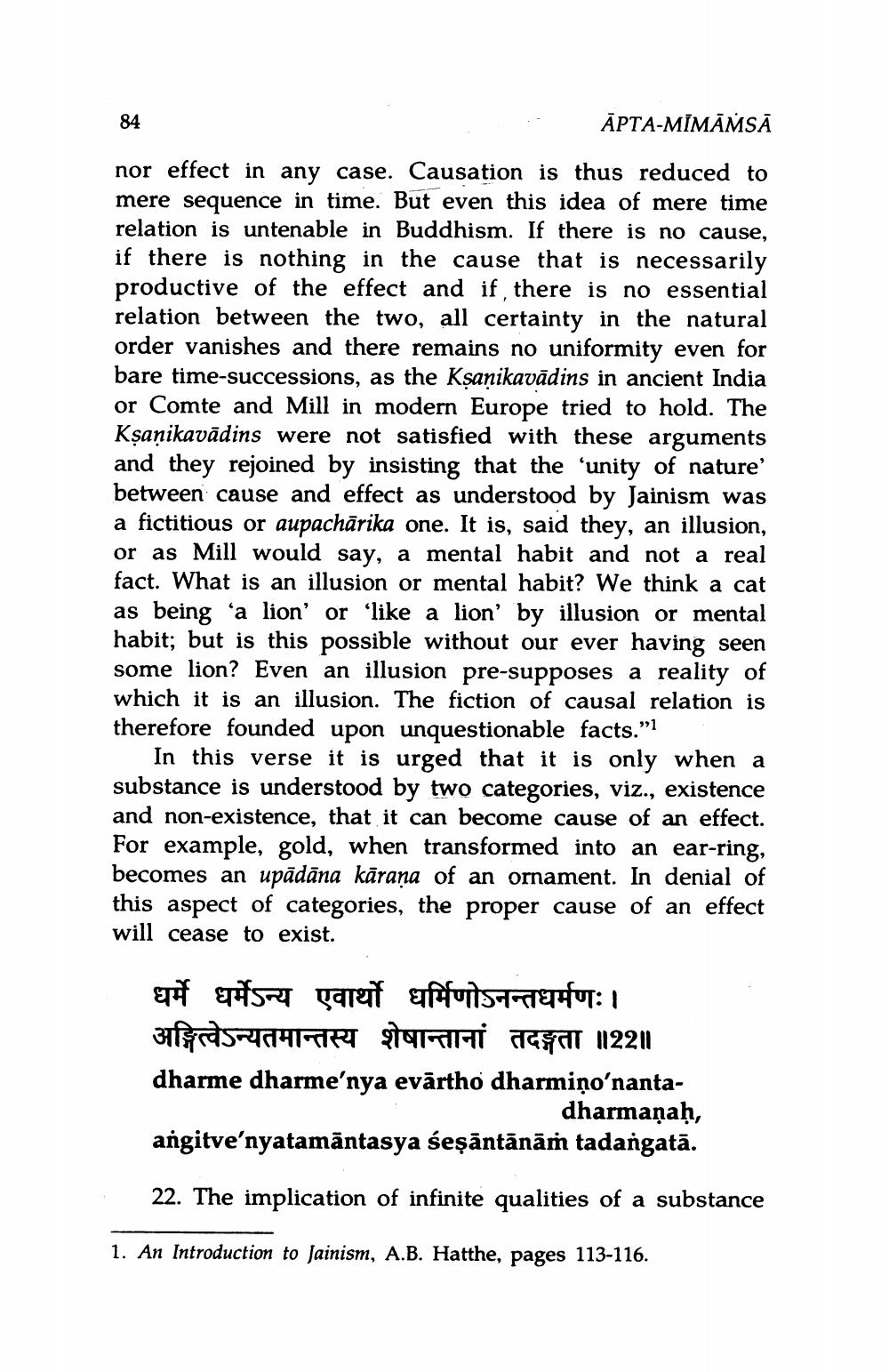________________
84
ĀPTA-MĪMĀMSĀ
nor effect in any case. Causation is thus reduced to mere sequence in time. But even this idea of mere time relation is untenable in Buddhism. If there is no cause, if there is nothing in the cause that is necessarily productive of the effect and if there is no essential relation between the two, all certainty in the natural order vanishes and there remains no uniformity even for bare time-successions, as the Ksanikavādins in ancient India or Comte and Mill in modern Europe tried to hold. The Kșanikavādins were not satisfied with these arguments and they rejoined by insisting that the 'unity of nature' between cause and effect as understood by Jainism was a fictitious or aupachārika one. It is, said they, an illusion, or as Mill would say, a mental habit and not a real fact. What is an illusion or mental habit? We think a cat as being 'a lion' or 'like a lion' by illusion or mental habit; but is this possible without our ever having seen some lion? Even an illusion pre-supposes a reality of which it is an illusion. The fiction of causal relation is therefore founded upon unquestionable facts.”1
In this verse it is urged that it is only when a substance is understood by two categories, viz., existence and non-existence, that it can become cause of an effect. For example, gold, when transformed into an ear-ring, becomes an upādāna kāraṇa of an ornament. In denial of this aspect of categories, the proper cause of an effect will cease to exist.
धर्मे धर्मेऽन्य एवार्थो धर्मिणोऽनन्तधर्मणः।
fra samh głHT THAT 1122|| dharme dharme'nya evārtho dharmiņo'nanta
dharmaṇaḥ, angitve'nyatamāntasya śeşāntānāṁ tadangatā.
22. The implication of infinite qualities of a substance
1. An Introduction to Jainism, A.B. Hatthe, pages 113-116.




